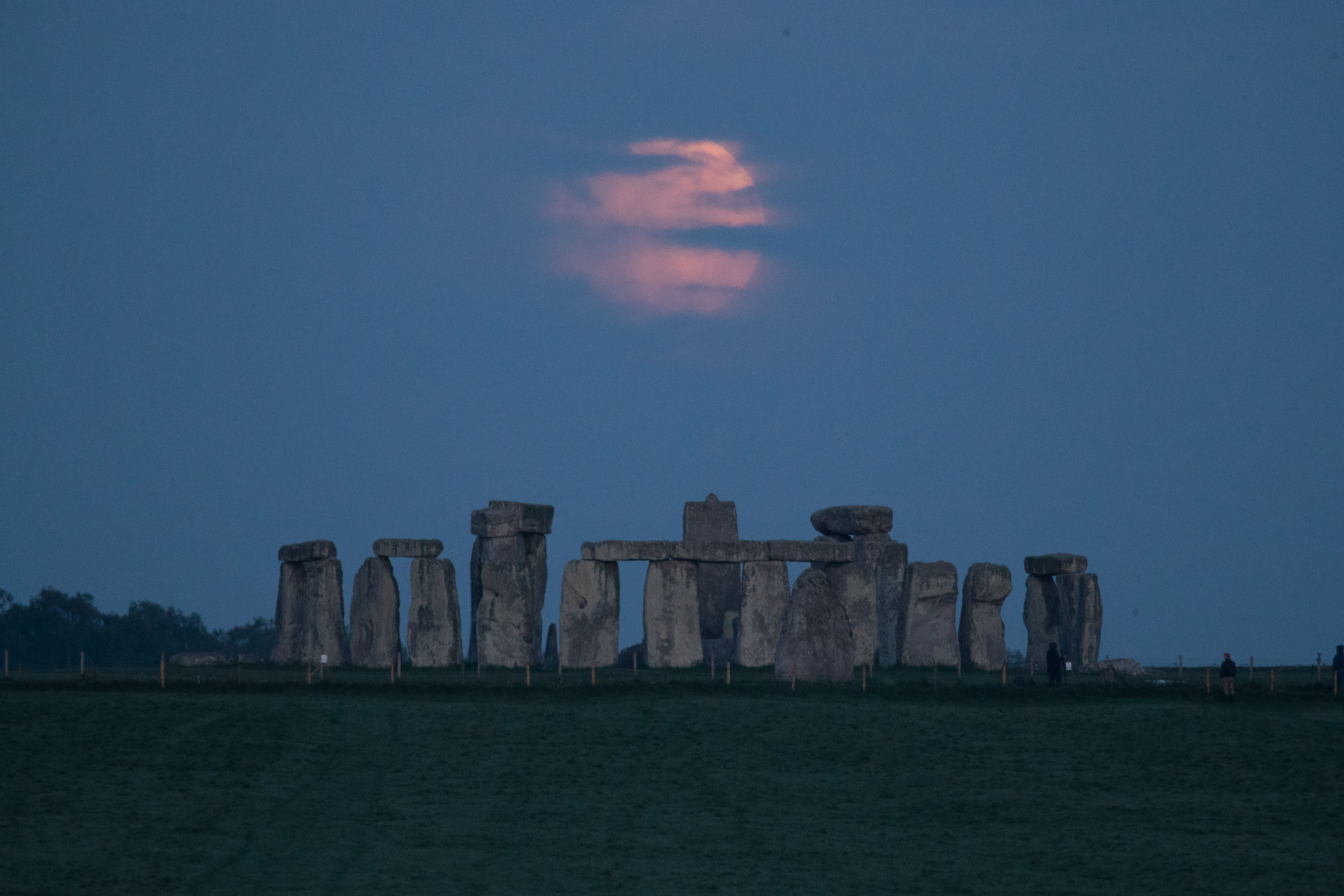Blue Supermoon: Rare celestial phenomenon to appear in the sky tonight
The most notable thing about tonight’s blue supermoon is not that it is blue or super – but that it is red

Your support helps us to tell the story
From reproductive rights to climate change to Big Tech, The Independent is on the ground when the story is developing. Whether it's investigating the financials of Elon Musk's pro-Trump PAC or producing our latest documentary, 'The A Word', which shines a light on the American women fighting for reproductive rights, we know how important it is to parse out the facts from the messaging.
At such a critical moment in US history, we need reporters on the ground. Your donation allows us to keep sending journalists to speak to both sides of the story.
The Independent is trusted by Americans across the entire political spectrum. And unlike many other quality news outlets, we choose not to lock Americans out of our reporting and analysis with paywalls. We believe quality journalism should be available to everyone, paid for by those who can afford it.
Your support makes all the difference.The night sky is set to greet the “blue supermoon”, as a reasonably rare celestial phenomenon appears in the sky.
The event happens when a blue moon combines with a supermoon. Some mark it as a rare and potentially symbolic phenomenon, while others simply use it as an opportunity to look up and recognise our nearest neighbour, the Moon.
Here’s everything you need to know about this month’s blue supermoon – including why it won’t be blue at all.
What is a supermoon?
The supermoon is used to refer to the point when the moon is at its closest point to Earth, and so looks a little bigger and brighter than usual. Though it can in theory apply to any time the moon reaches that point – known as perigee – more commonly it is used when the moon is full, as it will be tonight.
What is a blue moon?
There are two ways of defining a blue moon, which are similar but different. The first is when a full moon appears twice in one calendar month, and the other is the third full moon in an astronomical season, which fall between the equinoxes and solstices.
The former is the more common definition, but this month’s blue moon comes under the latter. The last of these blue supermoons came last August.
The blue moon doesn’t mean that the moon is blue. Though that can happen sometimes, the commonly used definition doesn’t actually relate to anything about the colour of the moon itself.
What is a blue supermoon?
Simply the combination of the two. It’s not clear how often it happens – in part because neither supermoon or blue moon are precise or scientific terms – but it is reasonably rare.
Why is this blue supermoon special?
The most notable thing about tonight’s moon may actually not be that it is blue or super at all. Instead, it is likely to come with an orange or red colour.
That is the result of wildfires in North America. They are letting off dust and small particles that are caught in the atmosphere, scattering the light and giving the sky and the Moon a deeper, redder look.
That will be even more clear when the Moon is low in the sky, since the light must pass through Earth’s atmosphere, which makes it more orange. A similar effect is responsible for the deep red that the Moon turns during a lunar eclipse, and is why that is sometimes referred to as a “blood moon”.
Does the blue supermoon mean anything in particular?
Not scientifically. Beyond the two facts that make it a blue supermoon – that is, that it’s the third full moon in an astronomical season, and it’s a little closer than usual – there is nothing astronomically notable about tonight’s moon.
Really, the moon is only a little bigger than normal, and the fact of it being a blue moon is just a quirk of the lunar schedule. The moon itself is unchanged, and it shouldn’t have any significant effects on the Earth either.
Some people choose to give it meaning, however, and astrologers have suggested it could be notable. There is no scientific backing for those claims, but they may be fun to be read about.
How do you see the blue supermoon?
Just like any other moon: go out and see it. Its relatively large size and the fact it is full should mean that it is easy to see, and spectacular when you do so, and you should be able to spot that red colour.
Experts advise that it is best to see the moon as it rises or sets, since the contrast with objects on the horizon mean that it should look larger and more spectacular to see. But other than that there is nothing special required to see it – unlike many other celestial shows, it doesn’t require special equipment or a lot of waiting around.
The peak of the full moon will arrive at 7.25pm on Monday evening, though of course it will remain largely full for the hours and even days either side. The moon rises at around 9pm and then sets around 6.30am on Tuesday morning.
But the weather might get in the way, at least in the UK. Skies are forecast to be cloudy, which might block the view, but it is likely there’ll be a chance to spot it at some point in the evening.
Join our commenting forum
Join thought-provoking conversations, follow other Independent readers and see their replies
Comments